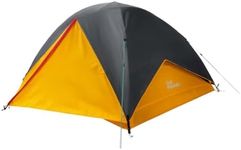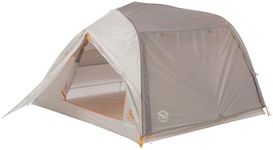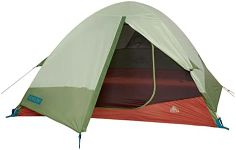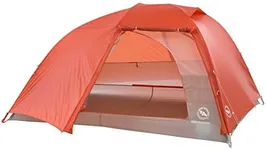Buying Guide for the Best 3 Person Tents
Choosing a 3-person tent is all about finding the right balance between comfort, weight, durability, and ease of use. Think about how you plan to use the tent: will it be for backpacking, car camping, festivals, or family trips? Consider the typical weather conditions you’ll face and how much space you want inside. The best tent for you will fit your group comfortably, protect you from the elements, and be easy to set up and carry.WeightWeight refers to how heavy the tent is when packed up. This is especially important if you plan to carry the tent on your back for hiking or backpacking. Lighter tents are easier to carry but may have less space or fewer features, while heavier tents often offer more comfort and durability. For backpacking, look for lighter options, usually under 6 pounds. For car camping, weight is less of a concern, so you can choose a heavier, more spacious tent.
Floor SpaceFloor space is the area inside the tent where you and your gear will fit. It’s measured in square feet or meters. More floor space means more room to stretch out and store your belongings, but it can also mean a heavier and bulkier tent. For three people, look for a tent with at least 40-50 square feet of floor space. If you want extra comfort or plan to store gear inside, consider a tent with a bit more space.
Peak HeightPeak height is the tallest point inside the tent. A higher peak height allows you to sit up or even stand, making the tent feel more spacious and comfortable for changing clothes or spending time inside. Lower peak heights make the tent lighter and more aerodynamic, which is good for windy conditions. If you value comfort and space, choose a tent with a higher peak height. If you prioritize weight and weather resistance, a lower profile may be better.
Season RatingSeason rating tells you what kind of weather the tent is designed for. Most 3-person tents are 3-season, meaning they’re suitable for spring, summer, and fall. These tents offer good ventilation and protection from rain. Four-season tents are built for winter and harsh conditions, with stronger poles and less mesh. Choose a 3-season tent for most camping trips, but if you plan to camp in snow or extreme cold, look for a 4-season tent.
Setup TypeSetup type refers to how the tent is assembled. Freestanding tents can be set up anywhere and moved around before staking, making them easy to use. Non-freestanding tents require stakes and guy lines for support, which can make them lighter but sometimes trickier to pitch. If you want convenience and quick setup, go for a freestanding tent. If you’re experienced and want to save weight, a non-freestanding tent might be a good choice.
VentilationVentilation is about how well air flows through the tent, which helps reduce condensation and keeps you comfortable. Tents with more mesh panels and vents allow better airflow, which is great for warm or humid conditions. Less ventilation is better for cold or windy environments. If you camp in hot or damp areas, prioritize tents with good ventilation. For cold weather, look for tents with adjustable vents you can close.
Weather ProtectionWeather protection includes features like a rainfly, waterproof floor, and strong seams to keep you dry and safe from wind and rain. A full-coverage rainfly offers the best protection, while a partial rainfly is lighter but less protective. If you expect rain or unpredictable weather, choose a tent with a full rainfly and a bathtub-style floor. For dry climates, you can opt for lighter protection.
Doors and VestibulesDoors and vestibules affect how easy it is to get in and out of the tent and where you can store gear outside the sleeping area. More doors mean less climbing over each other, which is helpful for groups. Vestibules are covered areas outside the tent for storing shoes and packs. If you want convenience and extra storage, look for a tent with two doors and spacious vestibules. For simplicity and lighter weight, one door may be enough.











